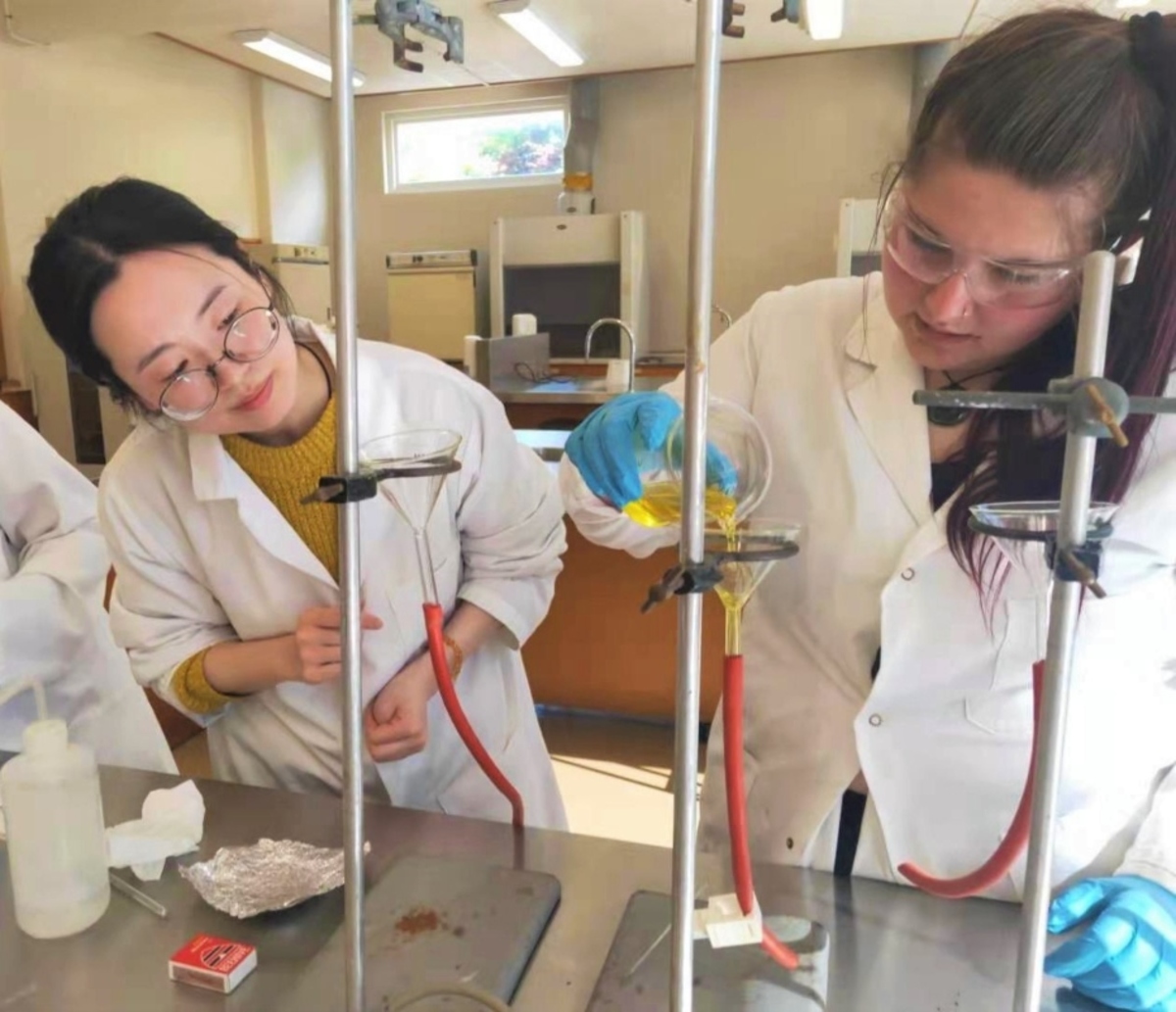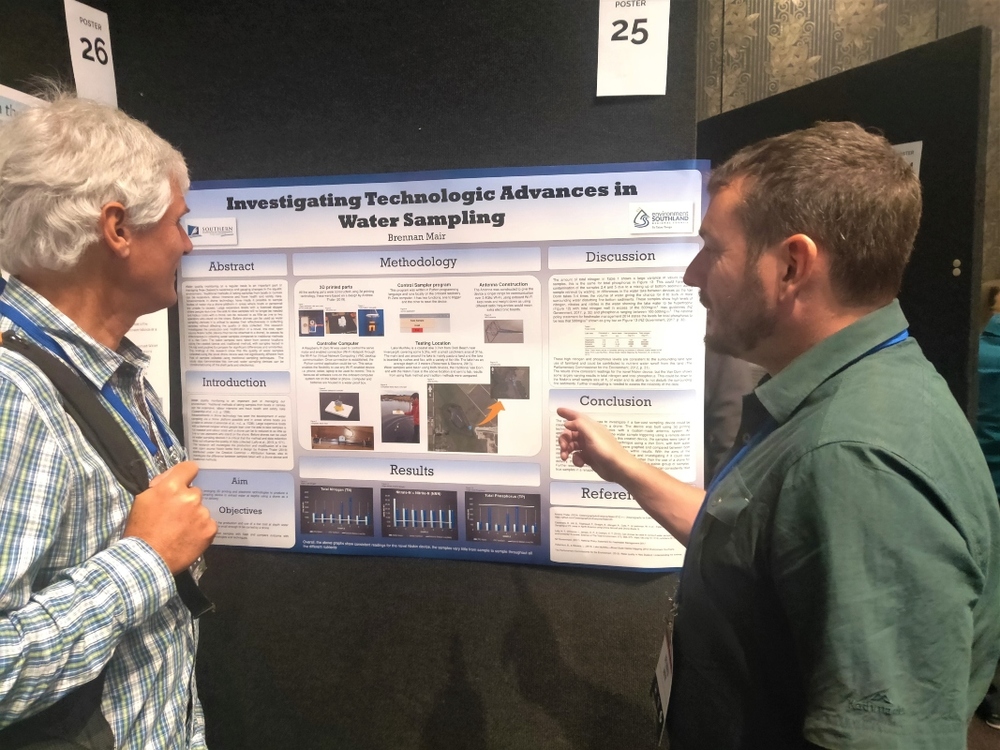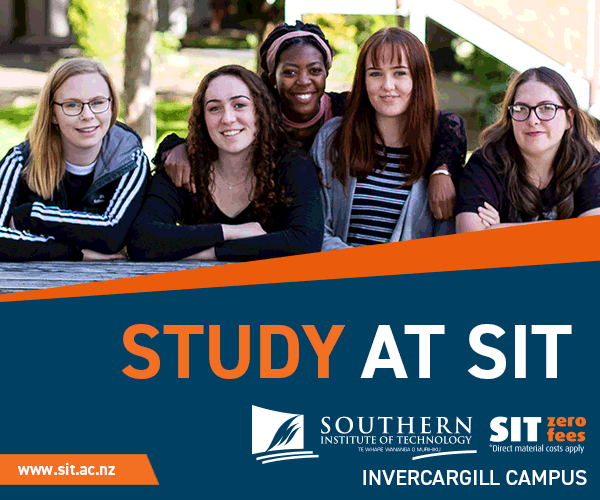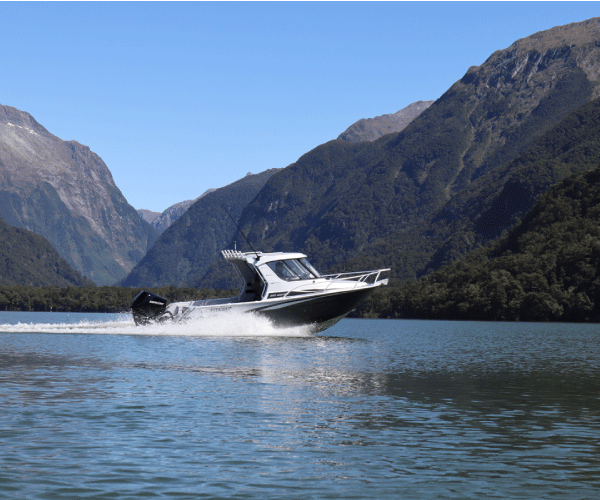SIT students selected to present at national freshwater conference
13 December 2020, 10:54 PM
 SIT Bachelor of Environmental Management year-3 student, Xinxin Zhang (left), spoke on her research into microplastics last week. PHOTO: Supplied SIT
SIT Bachelor of Environmental Management year-3 student, Xinxin Zhang (left), spoke on her research into microplastics last week. PHOTO: Supplied SITBachelor of Environmental Management students Brennan Mair and Xinxin Zhang stepped out of their comfort zones last week and presented to the “Weathering the Storm’’ freshwater science conference in Invercargill.
Usually, the Southern Institute of Technology (SIT) selects Masters or PhD students to present their work at conference, but this year the emphasis was on quality research at undergraduate level.
“Weathering the Storm” was a joint collaboration between the NZ Hydrological Society, New Zealand Rivers Group and the Freshwater Science Society.
Advertisement
Advertise on the Southland App
The conference brought together New Zealand’s foremost freshwater experts for some face-to-face networking, including those from academic institutes, councils, ministries, crown research institutes, and iwi.
Dr Christine Liang, programme manager for the School of Environmental Management, said the undergraduate students “did such a great job presenting at the conference, to an audience of professionals and academics”.
Mr Mair, supervised by Dr Tapuwa Marapara, did a poster presentation on a water sampling device he designed and built for use in freshwater locations where extracting the water sample is complex.

Brennan Mair (right), speaks with a conference attendee about the water sampling device he designed. PHOTO: Supplied SIT
Mr Mair said the people often waded out into muddy water, contaminating the sample they collected. It could also be a dangerous task to collect samples from deep, difficult to access water sites.
“With a drone you can obtain the samples safely, without contaminating the sample, and it easily provides accessibility into inaccessible places around lakes and ponds” he said.
Mr Mair said the conference feedback was encouraging.
He met one man from a large university in Virginia (Virginia Tech), USA who built similar devices and was quite excited about the potential for invention and the ways it could be used.
“He had a big team and big resources, whereas I built mine on a shoestring budget,” Mr Mair said.
Advertisement
Advertise on the Southland App
Environment Southland supported Mr Mair with some of the costs of building the device.
Industry recognition at this early stage of the device’s development was a plus, he said.
“It made me even more certain I could build my own business. I want to refine the device a bit more then put it into use.”
Using the drone also had other applications, such as mapping river banks and coastal erosion, taking pictures, and measuring biomass for farmers.
Mr Mair had previously worked for 25 years in the electronics industry.
“The water sampling device runs a little computer and the parts were 3D-printed. I had to do programming coding in python, and build the hardware from scratch. I’ve never written python code before, I built the device to push myself and use it as a stepping stone”.
“The highlight of attending the conference was seeing what other people in the field were doing and getting a real feel for the whole industry and the people active in it. I talked with really knowledgeable people, they were quite inspiring. It was exciting to be involved and I found the whole experience very interesting and informative,” said Mr Mair.
Advertisement
Advertise on the Southland App
International student Xinxin Zhang gave an oral presentation on the concentration and categorisation of microplastics from inner-city waterways in Invercargill.
Her work was supervised by Dr Liang.
She was nervous about presenting at the conference and wondered if her English could be a barrier to communicating but said she was warmly received and picked up positive feedback.
“To hear from others that I did well was really heart-warming and I hope it inspires other international students at SIT to study what they are passionate about and not be afraid to put themselves out there,” she said.
The conference high point was being able to disseminate her research widely and discuss it with freshwater experts, she said.
“My research report has also been picked up by WasteNet Southland and they are about to share it on the Love Southland website and on their social media”.
“I think it is important for people to be aware that microplastics are all around us, like in our local waterways and could end up inside of our food and inside of us. I am so happy that people are interested, and that my research is making a difference and helping Southland’s environment”, she said.
ACTIVITIES & ATTRACTIONS



![Jack's Blowhole & Tunnel Rocks Reserve (1hr) [W] - Hinahina](https://d3hbehni9j4crp.cloudfront.net/infoPages/5d106fdef431d20026d861f3/header_images/header_Jacks%20Blowhole%20venture%201280x800.jpg)
![Purakaunui Falls Walk (20min) [W] - Purakaunui](https://d3hbehni9j4crp.cloudfront.net/infoPages/5d106701f431d20026d861be/header_images/header_Purakaunui%20Falls%20DOC%201280x800.jpg)